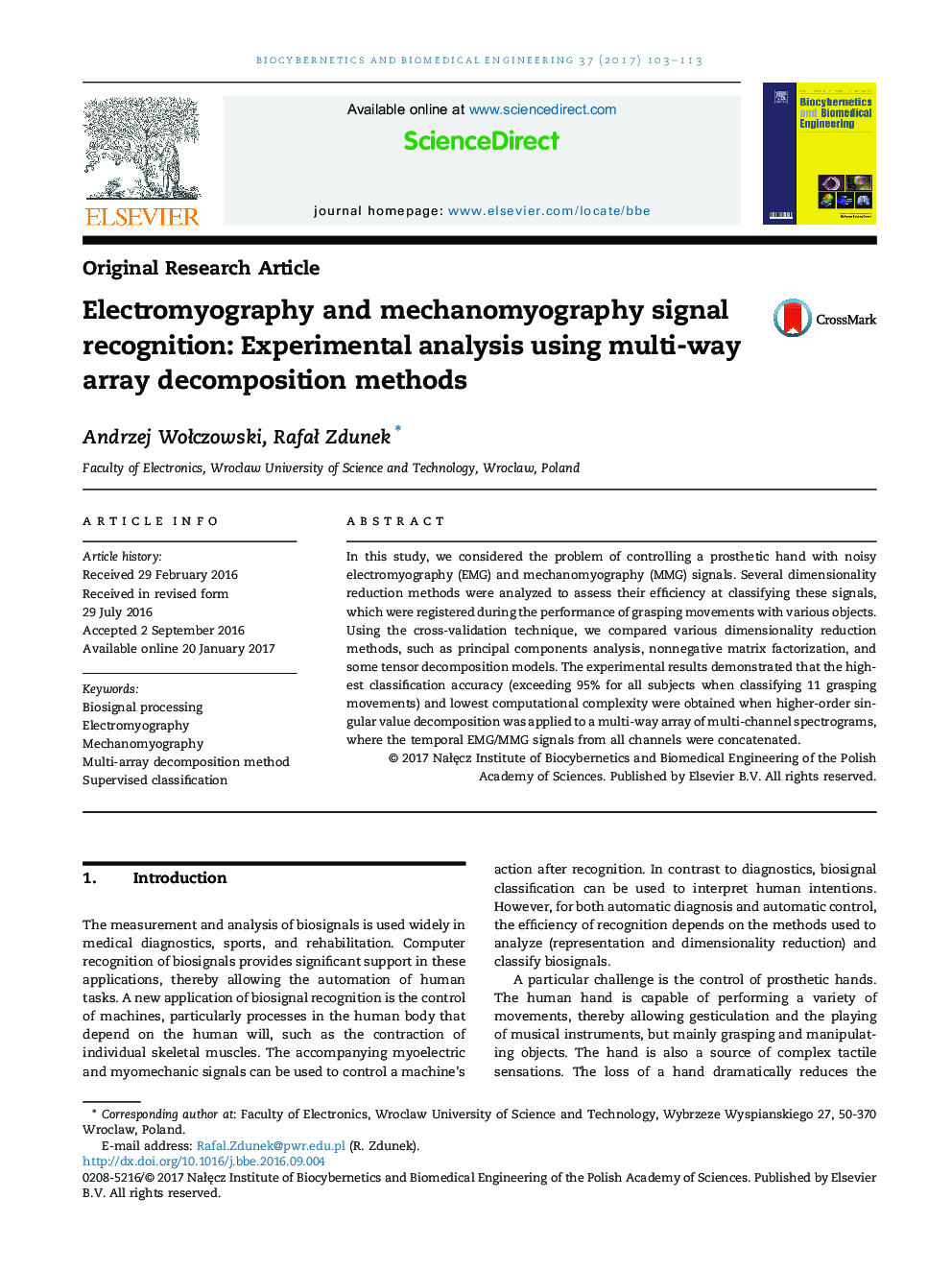| Article ID | Journal | Published Year | Pages | File Type |
|---|---|---|---|---|
| 6484250 | Biocybernetics and Biomedical Engineering | 2017 | 11 Pages |
Abstract
In this study, we considered the problem of controlling a prosthetic hand with noisy electromyography (EMG) and mechanomyography (MMG) signals. Several dimensionality reduction methods were analyzed to assess their efficiency at classifying these signals, which were registered during the performance of grasping movements with various objects. Using the cross-validation technique, we compared various dimensionality reduction methods, such as principal components analysis, nonnegative matrix factorization, and some tensor decomposition models. The experimental results demonstrated that the highest classification accuracy (exceeding 95% for all subjects when classifying 11 grasping movements) and lowest computational complexity were obtained when higher-order singular value decomposition was applied to a multi-way array of multi-channel spectrograms, where the temporal EMG/MMG signals from all channels were concatenated.
Related Topics
Physical Sciences and Engineering
Chemical Engineering
Bioengineering
Authors
Andrzej WoÅczowski, RafaÅ Zdunek,
